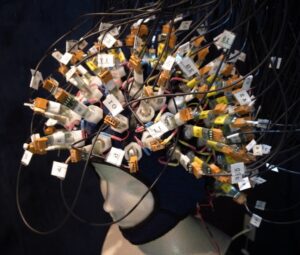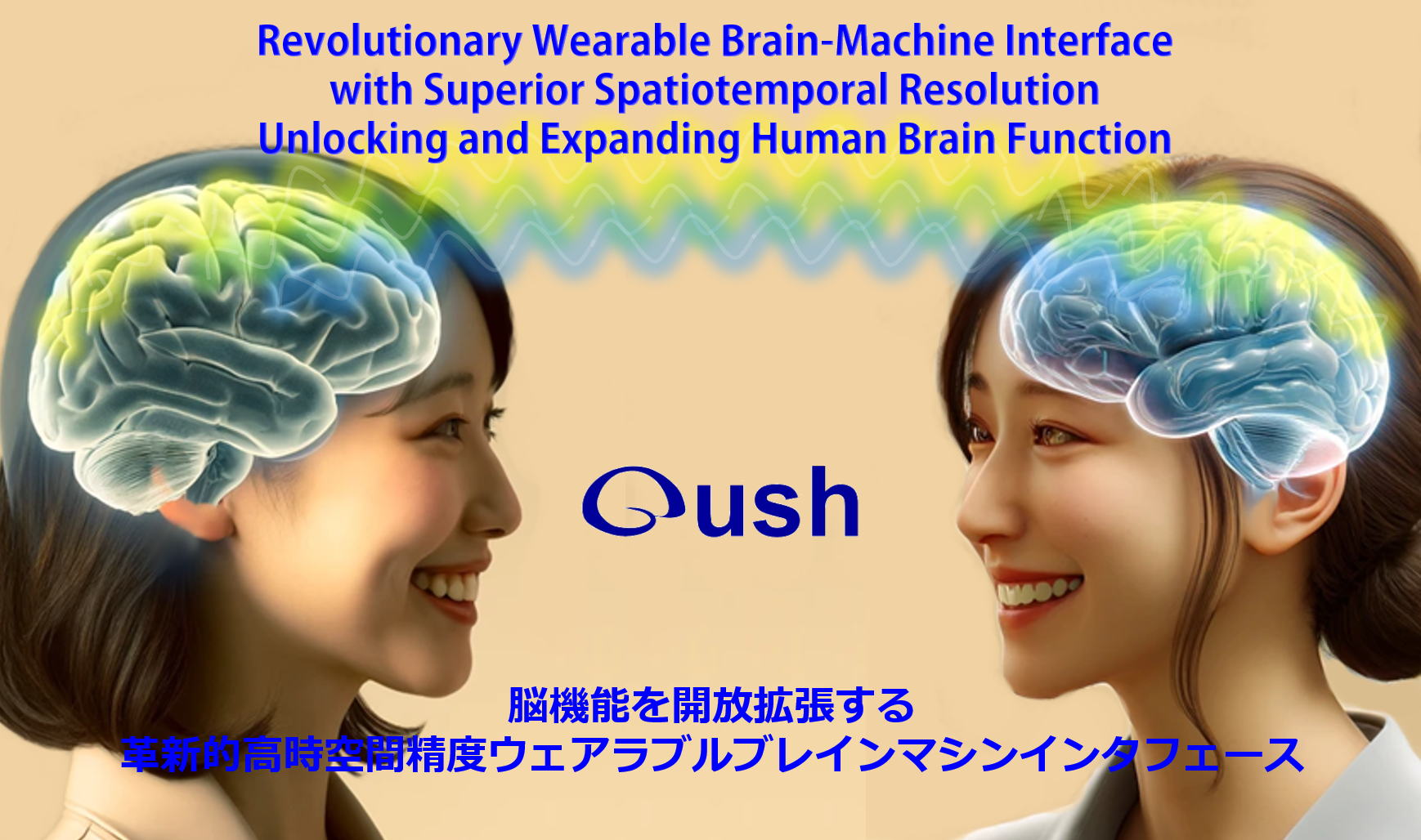
Brain-Machine Interface
The technology of controlling and operating machines and computers by reading brain signals is called brain-machine interface (BMI) and is expected to be a society-changing technology. Invasive BMI, in which electrodes are inserted intracranially to directly measure the electrical activity of the brain, has been under research and development as a BMI that can measure brain signals with high temporal and spatial resolution. However, invasive BMI requires surgical invasion of the brain to insert the electrodes, and there are safety issues such as biological rejection, injury to brain tissue and blood vessels, and the deterioration of the electrodes over time. In addition, it is difficult to place intracranial electrodes over a broad area of the brain, making it difficult to measure and analyze the entire brain as a whole system. On the other hand, there are non-invasive BMIs such as electroencephalography (EEG), magnetoencephalography (MEG), functional magnetic resonance imaging (fMRI), and functional near-infrared spectroscopy (fNIRS), which do not cause injury or pain. However, they cannot measure brain signals with high temporal and spatial resolution like invasive BMIs. We have invented a magnetic field biased probe (MBP) that enables non-invasive reading of brain signals from the whole head with high temporal and spatial resolution.

Magnetically Biased Probe (MBP)
Our Technology
In MBP, a static magnetic field is transmitted to the cerebral cortex, the outermost layer of the brain, by a coil placed on the head. The static magnetic field fluctuates with neuroelectric activity in the cerebral cortex. By measuring this fluctuating magnetic field with a magnetic sensor placed at the top of the coil, the electrical activity of the brain can be read. The magnetic field generated by the coil is as strong as the geomagnetic field in the environment, which makes it safe to use. Furthermore, a brain-machine interface (BMI) that is easy to use by simply putting on a hat can be realized by MBP because non-contact measurement of brain signals is possible.

Prototype of whole-head 159 ch MBP system
The MBP-BMI is a proprietary technology developed by our company, and to date, we have developed a 159-channel whole-head brain signal measurement system. It is an innovative non-invasive BMI that can read out functional brain dynamics from the whole brain with superior spatiotemporal accuracy.
The MBP-BMI has the following advantages over conventional invasive and non-invasive technologies.
- Enables measurement of brain signals with high temporal and spatial accuracy
(In EEG / MEG, identifying the location of brain activity from measurement data is a problem with no unique solution. There is a fundamental limit to spatial accuracy. MBP can obtain dynamic brain activity information instantly with excellent spatial accuracy without any special analysis) - Safe and non-invasive
- Whole brain information can be acquired by whole brain measurement
- High signal-to-noise ratio and excellent quality of measurement signals
- Easy to use (just put on the hat)
- Less susceptible to body movement, allowing measurement of brain activity during exercise
Gush Inc.
Japan
CEO
Osamu Hiwaki
E-Mail
gush.jpn@gmail.com

